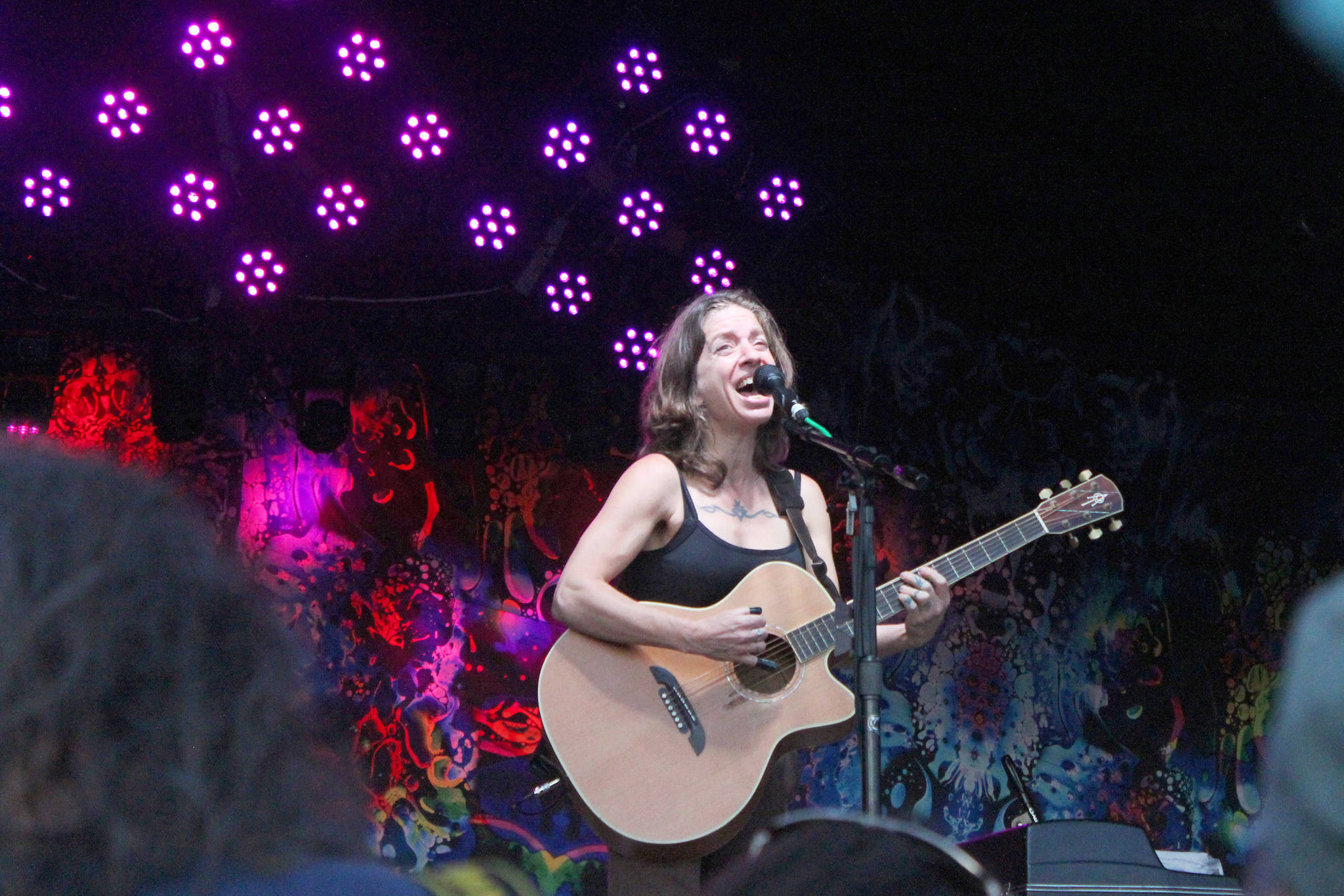Some people know the story of how Salmonfest came to be, a lot don’t.
Back in 2011, it was debuted as Salmonstock. The main purpose for the festival at that time was to protest the proposed Pebble Mine Project, and to drum up funds and support for fighting it. When it appeared Pebble would no longer be an issue, several of the festival’s producers pulled out and festival director Jim Stearns forged ahead under the name Salmonfest with Cook Inletkeeper as a new major partner.
“We got involved in year one,” said Bob Shavleson of Cook Inletkeeper. “And every year that interest has grown.”
Same festival, different name, and perhaps a bit less urgency.
That’s not how things have felt at the annual “three days of fish, love and music” for the last two years. With the proposed Pebble Mine being given another opportunity to secure permits, many Alaskans are worried. The original intent of Salmonfest is back in full force and could be felt in nearly every corner of the Ninilchik Fairgrounds this past weekend.
Throughout the musical performances on Friday and Saturday, festival organizers and volunteers took advantage of their captive audiences to bring out activist and advocacy workers to the stage as well. Each speaker had their own concerns to address, but they call came down to protecting habitat for salmon in Alaska. For some speakers, that meant keeping Pebble from becoming reality. For others, it meant recalling Gov. Mike Dunleavy, and for still others (the scientists who took the stage, in particular) it meant getting serious about slowing the effects of climate change.
Daniel Lynch, a Soldotna resident, stepped onto the Ocean Stage on Saturday dressed in a red onesie and tall, striped hat that read Dr Suess’ “One Fish, Two Fish, Red Fish, Blue Fish.” But he took some creative liberties by changing the words when he said:
“Some are sad, some are glad, some are very, very bad. Why are they sad, glad and bad? I don’t know, go ask your dad. Well if your dad’s not here, here’s why the fish are mad and sad: We’ve got a new governor, and he’s got big money friends, and they want to rape and pillage we the people’s resources.”
Just before headliner Ani DiFranco took the stage on Friday, activist Lydia Olympic, the former president of Igiugig Tribal Village Council, was invited out for a few words on the subject of protecting salmon.
She spoke of her decision to leave that position, and how it was motivated by not feeling she was able to stay neutral on the issue of the proposed Pebble Mine.
“I’m going to dedicate, full time … to fighting this f****** proposed Pebble Mine,” Olympic said.
Advocacy markedly stepped out of the Salmon Causeway this year — the section of the festival reserved for educational and activist booths and groups — and onto center stage.
“We’re also seeing increased threats to our salmon culture,” Shavleson said. “And this year we saw an incredible heat wave that pushed temperatures over 80 degrees Fahrenheit in the Deshka (River) and there were thermal barriers preventing salmon from returning to their spawning grounds. So we think people are recognizing more and more, it’s vital to protect this unique resource.”
The Salmon Causeway has been growing since its inception. New this year was a painting of the Cook Inlet Watershed, where festivalgoers were invited to dip their thumbs in ink and mark a town or location on the map they felt a deep connection to. The map also had landmarks labeled with their traditional Alaska Native names.
Another part of the causeway that’s been growing is the education cooking demonstrations. Inspired by the Chef and the Market feature of the Homer Farmer’s Market, the demos allow people to watch a local chef prepare food before tasting some of it for themselves. This year, “Check the Pantry” radio show host Jeff Lockwood showed people who to use every part of the salmon, while Evan Vogl of the Little Mermaid restaurant in Homer prepared salmon poke and Carrie Thurman and Sharon Roufa of Homer’s Two Sisters Bakery concocted a savory salmon chowder.
“I think it was founded on that idea that it’s about music, but it’s also about getting people involved, engaged and educated,” Shavelson said of the growth of the Salmon Causeway. “And the people that come to event are into that.”
People are also into the food and music that Salmonfest provides. Stearns has said he makes a dedicated effort to secure female headliners every year. This year’s main Friday headliner, Ani DiFranco, serenaded a large crowd with a mix of her oldies and things she’s written more recently since moving to New Orleans 15 years ago.
As she wailed on her selection of guitars and belted out ballads, DiFranco elicited tears from 20-year-old and 50-year-olds alike in the crowd.
Back again this year was the art installation by Homer artists and activist Mavis Muller. Each year, Muller designs an image having something to do with salmon and water. She then creates that image on the sand of the rodeo grounds with large pieces of colored cloth.
Finally, people attending the festival are invited to come out and surround the image, lying side by side. A photograph of the art installation is taken via drone from the air.
Reach Megan Pacer at mpacer@homernews.com.

